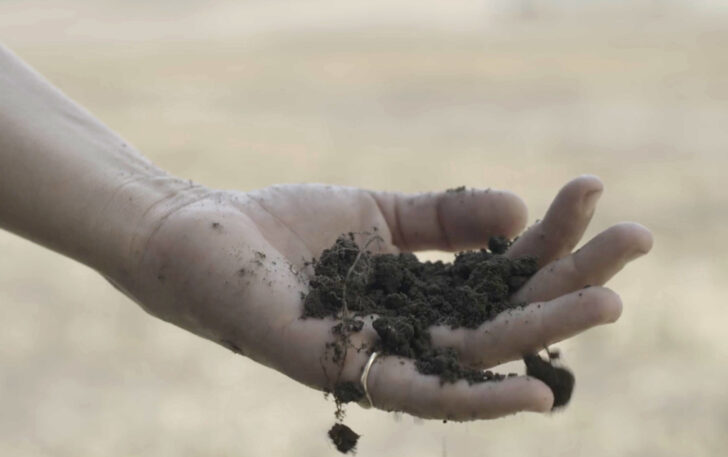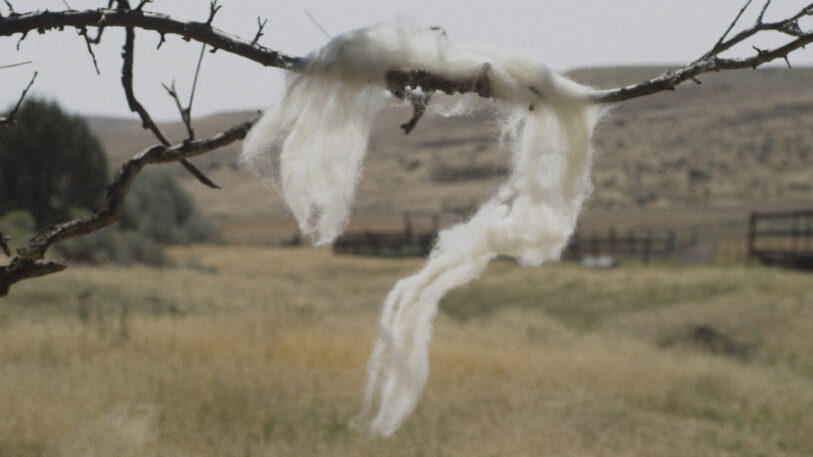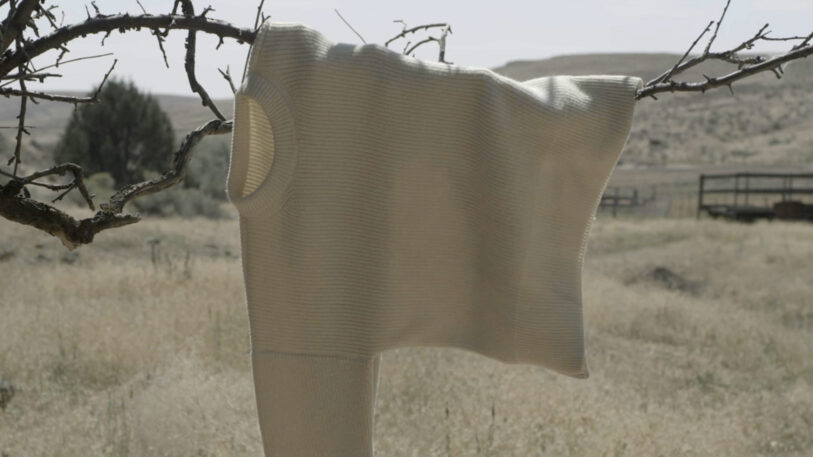For years, luxury brands prided themselves on sourcing high quality wool from Italy. But three years ago, American designer Janessa Leoné met a rancher who persuaded her to make all her sweaters from sheep raised in the Pacific Northwest.

The rancher in question is Jeanne Carver, an Oregon-based farmer who has received industry awards for her ethical farming practices. She speaks to me from her family’s ranch, which was established in 1871 and has been operating continuously for 152 years. “After decades of fashion brands taking their supply chains offshore, there’s now an assumption that you can’t make things here in America,” Carver says. “That assumption is wrong.”
Thirty-five years ago, Carver started to observe the soil drying up and animal species disappearing from her land due to over-farming. She decided to take action, by completely overhauling the farming practices on her ranch. She stopped tilling and closely managed where animals grazed to ensure the grasses wouldn’t be depleted. In 2016, her ranch was the first in the world to be certified by the Responsible Wool Standard, a certification launched by the nonprofit Textile Exchange, devoted to combat climate change in the fashion industry.

Carver says that to survive as a business, she needs companies to buy her wool, which can be significantly more expensive than imported wool. Given these steeper costs, Carver has pitched her business to luxury labels who are interested in sourcing high quality wool, while also reducing their environmental impact. (The United States Department of Agriculture says that healthy, well-fed sheep tend to produce better fleece.) Today, her brand partners include Janessa Leoné, who launches her first collection with Shaniko Wool and Ralph Lauren, who used the wool for last year’s Olympic uniforms. “If I don’t have these brands, I have nothing,” Carver says. “They transform my harvests into something useable.”

What Went Wrong With Wool
America was once a major hub of clothing production. While the South was known for its cotton crops, there was also a thriving wool industry across the country. In 1988, Jeanne Carver and her late husband bought the 32,000-acre Imperial Stock Ranch to raise cattle and sheep. Eventually, they partnered with other family-owned ranches in the area, creating the Shaniko Wool Company. For a century, these ranches supplied local businesses with meat, wool, and leather. “We had regional systems that bought our meat and fibers to feed and cloth local communities,” Carver says.
But over the decades, globalization made it cheaper for companies to import sheep products from overseas; here in the U.S., the sheep industry began to suffer. Carver says that the Shaniko Wool Company struggled to compete with overseas competitors, which had cheaper labor and farming costs. American sheep production has been declining since its peak in the late 1940s; in the 1990s, it started to plummet, with tens of thousands of sheep farmers going out of business. Today, there are only 100,000 sheep farms left in the country, producing just over five million sheep.
Thirty five years ago, it was obvious that the entire ecosystem on the ranch was depleted. “Creeks in this part of the world used to be packed with salmon, but in 1990, we only had two salmon return home to spawn,” she recalls. “It was a key indicator of the health of this eco-system. We were in trouble.”
Carver decided that the only way her ranches would survive was if she shifted to better farming practices. She began developing a conservation program—but, in 1989, the land was so damaged she wasn’t sure if it would actually have an impact.

One of the most important features of Carver’s farm involves closely managing where animals can graze and for how long. When sheep feed on the grasses, it can stimulate more growth, while also keeping the animal fed —but if they completely deplete the grasses, it ultimately destroys the plants. The farm also strategically placed minerals and water sources away from natural streams, to prevent sheep from searching for water on their own, which could result in trampling the banks and destroying the streams.
These program are expensive to implement. The process of bringing in third-party auditors to ensure the farm meets its certification requirements is also pricey, costing as much as $15,000 per certification. All of this contributes to the higher price of Shaniko’s wool.
Carver’s shift in agricultural practices coincides with a broader movement towards regenerative agriculture that started first in the food industry, but has expanded, in recent years, to the fashion sector. The promise of regenerative farming is that it could help tackle climate change by sequestering carbon into the soil. (Shaniko doesn’t till the soil, for instance, which would release carbon, and it keeps vegetation on the land healthy, which keeps carbon underground.) But some argue that regenerative farming is overhyped and calculating exactly how much carbon is in the soil is often inaccurate.
Still, Carver is committed to this approach to farming, mostly because she is seeing tangible results. The stream holds more water and there’s more biodiversity throughout the ranch. “We hoped that in our lifetimes, we would see a difference,” Carver says. “But in 20 years, we’ve already seen record numbers of salmon returning to this creek that borders our ranch.”

Getting Brands On Board
A decade ago Janessa Leoné founded her eponymous fashion label, which makes hats, handbags, and sweaters. She’s focused on building a supply chain on par with other luxury brands, which is why she began by sourcing her wool from Italian mills, which are known for their high quality. But it occurred to her that many European brands have long-term relationships with local suppliers and are able to keep a close eye on production, to ensure that quality is up to scratch. “I wanted to explore what it would take to do that here in the U.S.,” Leoné says.
Several years ago, she came across Shaniko Wool Company, and was impressed by the quality of its wool. (The Responsible Wool Standard says that sheep that are healthy and well-fed tend to make fleece that is soft and strong, which makes for better yarn.) But it was Shaniko’s land management practices that convinced Leoné it was worth completely overhauling her supply chain. She hired Rachel Cantu, the former head of supply chain at Patagonia, to build a new one. “We’re at a new stage in the fashion industry where we aren’t just working to reduce harm in production, but we’re thinking about how to make a positive impact when we source raw materials,” Cantu says.

As Leoné explored Shaniko’s practices (which are documented by the Responsible Wool Standard), she believed that buying the company’s wool was a way to support American farmers and improve the health of American soil. And over the past two years, as she’s reimagined her supply chain, sustainability has become her main focus. This month, she released a manifesto outlining her goals for the next seven years, which includes actively partnering with farms and supporting responsible farming practices.
Part of the reason that Leoné has been able to make this switch is that her label is known for its high-end knits, which cost upwards of $300 and can run as much as $797. From the start, she priced her garments to incorporate high-quality raw materials, so it was easier to switch to Shaniko wool. But many other fashion brands are more price-sensitive, which is why cheaper wool dominates the market. Until consumers are willing to pay more for sustainably sourced products, or governments impose more stringent regulations on agriculture, it’s unclear how scalable Shaniko’s approach will be.
Still, Leoné believes she’s moving in the right direction. This fall, all of her sweaters will use wool from Shaniko farms, which is sent to a mill in North Carolina, and then knit in Los Angeles, allowing her to achieve a product entirely made in the United States. “To me, there’s something beautiful about tending to the land here in my own country, close to where I live,” she says.
